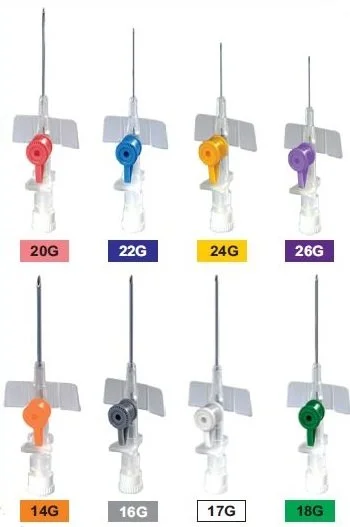The Essentials of Intravenous Cannula-IV Cannula Explained
Intravenous cannula is the insertion of a small plastic tube, an intravenous cannula, into the peripheral vein. It is an important procedure that ensures good venous access for the administration of fluids and drugs, including nutritional ones. It also facilitates the collection of blood specimens when required. IV cannula, as they are often more colloquially known, or intravenous catheters, are among the most significant medial accessories employed within a hospital, clinic, and other ambulatory care settings.
What is Intravenous Cannula?
Intravenous Cannulas deal with the insertion of a thin, usually flexible tube, into a vein. It thus allows medical practitioners to give treatments and medications right into the patient’s blood stream and is hence an integral part of patient care. Be it fluid replacement, medication delivery, blood transfusions, or intravenous nutritional therapy, the intravenous cannula forms one of the most significant apparatus in healthcare today.
Importance of IV Cannula in Health Care
The cannula plays a very important role in many different medical fields, which range from but are not limited to the following examples:
Hospitals
Intravenous cannula play their role in everything from the routine administration of medications to acute and emergency interventions therein. It serves as quick, effortless access to the vascular system and is deemed paramount for timely and efficient patient care.
Clinics
Intravenous cannula is utilized in outpatient clinics to administer medications wherein the oral route would not be fitting or effective. This ensures all the treatments that are necessary for patients are given in a controlled and effective manner.
Ambulatory Care: In patients who receive prolonged courses of therapy, as in chemotherapy or intravenous antibiotics, the cannula provides ease and convenience for those receiving continued treatment.
The Components of an Intravenous Cannula
An IV cannula has several important components:
Catheter
It is a small, flexible tube introduced into the vein. Most of the modern IV cannula now uses materials such as FEP-a fluorinated ethylene propylene with kink resistance-for their clarity, which easily facilitates visualization of fluid flow.
Wings
These are thin, usually flexible extensions from the catheter to help secure the cannula in place. They provide stability and reduce the risk of the cannula being accidentally dislodged. The injection port has a valve mechanism for safe and easy injection of fluids and/or medications. It contains a non-return silicon valve that, on some intravenous cannulas avoids the occurrence of backflow or contamination.
Flashback Chamber
The flashback chamber is transparent and informs the health care provider about the proper placement of the cannula through a flash of blood that shows the cannula is in place inside the vein.
Characteristics of Accu-Vein Intravenous Cannula
Accu-Vein intravenous cannula provides several advanced features to make it even better in terms of performance and safety:
Tapered & Kink Resistant FEP Catheter
Tapering minimizes trauma, thus offering smooth insertion and assuring the reliable flow of fluid. Its transparency and radiopacity make it more identifiable and observable under imaging.
Flexible Wings
They provide safe and stable fixation, with reduced chances of dislodging the cannula during use.
Non-return Silicon Valve Injection Port
The injection port allows for safe fluid and medication infusion while the silicon valve avoids back pressure and ensures sterility.
High Pull Force Resistance
Accu-Vein Intravenous cannula meets the ISO standards when a catheter pull force is more than 10N and a needle pull force is above 40N, ensuring increased reliability and safety.
Clear Flashback Chamber
The Flashback chamber provides clear visual confirmation of proper cannula placement by giving a flash of blood when cannula proper insertion has taken place.
Individual Packaging
Each IV cannula is individually packaged in a blister pack. This ensures sterility until use.
E.O Sterile
The cannulas are sterilized by E.O. gas. It ensures high levels of sterility and safety for the patient.
Benefits and Applications of Intravenous Cannula
The applications and the benefits of intravenous cannula are numerous:
Efficient Medication Administration
The medication is introduced directly through IV cannula because it reaches the blood very fast and effectively.
Reliable Administration of Fluids
Intravenous cannulas will administer the needed fluids directly into the patient’s stream of blood in cases of hydration or regulation of electrolyte balance.
Blood Sampling
The cannula can be utilized for blood sampling, which helps in reducing the painful prick of a needle in patients. Nutritional: Intravenous cannulas permit the infusion of nutritional solutions directly into the bloodstream of patients who cannot tolerate oral nutrition. Challenges and Considerations Despite their wide usage, intravenous cannulas do have associated potential challenges and considerations.
Infection Risk
The insertion site is always at risk for infection. Employing asepsis and using sterile equipment during insertion minimize these chances. Vein Irritation/Damage: Poor insertion techniques or multiple insertion attempts can cause vein irritation or damage. Skilled technique and routine inspections of the insertion site can prevent complications.
Dislodgment
The cannula can become dislodged if not fixed well. Proper fixation and education of the patients help in minimizing this risk.
Conclusion
Intravenous cannulation has been and remains a very basic procedure in today’s healthcare service provision; it gives necessary access to the bloodstream through which various treatments and interventions can be offered. Advanced intravenous cannulas have features and benefits that significantly improve patient safety and treatment success rates. This is further possible with the right techniques of application coupled with proper infection control in ensuring the highest level of positive outcomes of this important medical intervention.







